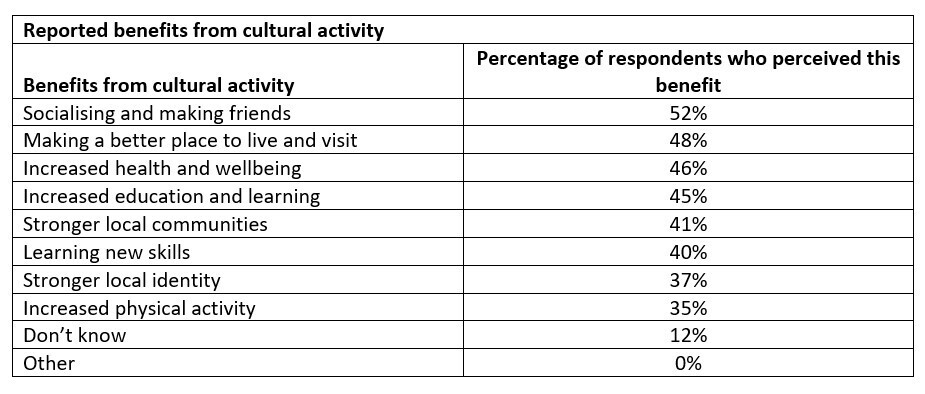Culture strategy
Scotland is home to many forms of culture, and the National Trust for Scotland has contributed to the development of the new national culture strategy.
Our own research has found that people take a very broad view of what constitutes culture, including music, food and cuisine, history, and sports, with substantial interests in natural heritage, gardening, theatre and drama. We’ve also looked at the barriers to cultural participation and considered how these could be overcome.
A new culture strategy for Scotland (2019) [an edited excerpt]
For the first time in several decades, Scotland now has a national culture strategy, entitled ‘A Culture Strategy for Scotland’. The National Trust for Scotland supports a wide range of cultural activities and we have been very supportive of the new strategy.
To help inform the development of the strategy, the Trust commissioned public opinion research with a representative sample of the population, on what constituted culture, what the barriers were to participation, and the benefits of cultural activities.
Cultural preferences
We found that the favourite forms of culture in Scotland are music, food and cuisine, history, and sports, with substantial interest also in natural heritage, gardening, theatre and drama. This confirms previous Trust research which found the public takes a broad view of what constitutes ‘culture’.
The reported benefits of cultural participation include socialising and making friends, making localities better places to live and visit, improved health and wellbeing, education and learning, and building stronger local communities.
Barriers to participation
Only 25% of respondents reported no barriers to cultural participation (31% of men reporting no barriers, 20% of women). The most commonly occurring barrier to participation is cost, followed by time, lack of confidence, transport, and lack of information.
Compared to the population as a whole, barriers to participation were more commonly experienced by young people (29% higher incidence than average), those on lower incomes (17% higher), ethnic minorities (23.5% higher), those identifying as Lesbian, Gay, Bisexual or Transgender (38.6% higher), and people with disabilities (40% higher).
Cultural transformation
We were also interested in better understanding the perceived benefits of cultural activity, beyond the immediate enjoyment of taking part. Overall, respondents reported strong benefits across the board but in particular socialising and making friends (52%), making a better place to live (48%) and increasing health and wellbeing (46%).

In 2018, The Trust itself commissioned Skyblue Research to carry out a literature review evaluating the social and economic impacts of accessing heritage (built, cultural, natural, tangible and intangible). The research found a range of social benefits being realised, from short-term (fun/family day out, education and learning), through the medium-term (improved wellbeing, increased physical activity), to the long-term (social cohesion, changes in attitudes).
Culture is therefore not just something that can be enjoyed for fun or education. It also has the potential to transform lives and communities. The Skyblue report found that: ‘…in the longer term, heritage was found to contribute to the development of “social capital”… sense of connectedness, belonging, and ability to bring about change in their lives and communities.’
Participation in cultural activities can therefore serve to increase social inclusion, help develop a range of skills, and provide opportunities to change attitudes and behaviours.
Cultural ambitions
Finally, we asked respondents what forms of cultural activity they would most like to see developed in their local area.

When compared with the results for current cultural activities undertaken, the most noticeable differences were that ‘film/TV’ dropped from first place, suggesting current provision was adequate for this, whereas greater priority was given to ‘nature and natural places’, ‘growing and gardening’ and ‘architecture and built heritage’, suggesting these were activities respondents would like to see better provided for in their own areas in the future.
A new culture strategy for Scotland
pdf (649.164 KB)
Download the pdf to read the report in full.